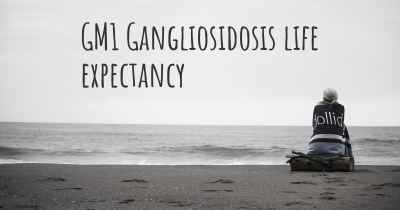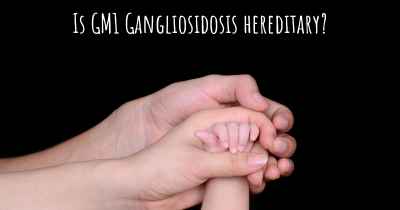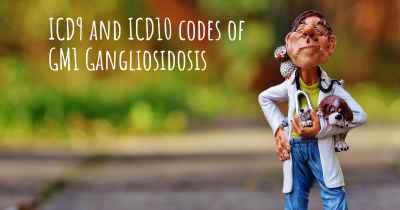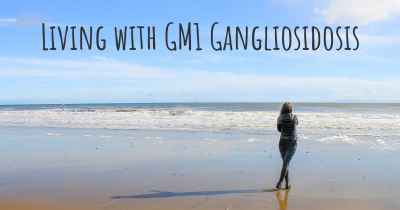What is the history of GM1 Gangliosidosis?
When was GM1 Gangliosidosis discovered? What is the story of this discovery? Was it coincidence or not?
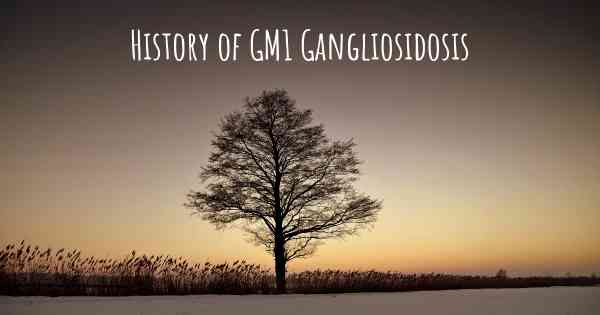
GM1 Gangliosidosis:
GM1 Gangliosidosis is a rare genetic disorder that affects the nervous system. It is a lysosomal storage disorder, which means that it is caused by the accumulation of certain substances within the lysosomes of cells. Specifically, GM1 gangliosidosis is characterized by the buildup of a lipid called GM1 ganglioside in the cells of various tissues, particularly in the brain and spinal cord.
Discovery and Classification:
The history of GM1 gangliosidosis dates back to the early 20th century when the disorder was first described. In 1933, a German physician named Ernst Sachs reported a case of a child with progressive neurological symptoms, including muscle weakness and developmental regression. This child was later found to have an accumulation of gangliosides in the brain, leading to the identification of GM1 gangliosidosis.
GM1 gangliosidosis is classified into three main types based on the age of onset and severity of symptoms:
- Infantile form: This is the most common and severe form of GM1 gangliosidosis. Symptoms typically appear within the first few months of life and progress rapidly. Affected infants may experience developmental delay, muscle weakness, seizures, and an enlarged liver and spleen. Life expectancy is usually limited to early childhood.
- Juvenile form: This form of GM1 gangliosidosis usually begins in early childhood, between the ages of 3 and 10. Symptoms may include muscle stiffness, difficulty walking, intellectual disability, and impaired speech. The progression of symptoms is slower compared to the infantile form, and life expectancy can vary.
- Adult form: The adult form of GM1 gangliosidosis is the rarest and mildest form. Symptoms typically start in late childhood or early adulthood and progress slowly. Common symptoms include muscle weakness, ataxia (lack of muscle coordination), and dystonia (involuntary muscle contractions). Life expectancy is usually normal, but individuals may experience significant disability.
Genetics and Inheritance:
GM1 gangliosidosis is caused by mutations in the GLB1 gene, which provides instructions for producing an enzyme called beta-galactosidase. This enzyme is responsible for breaking down GM1 ganglioside. Mutations in the GLB1 gene lead to reduced or absent beta-galactosidase activity, resulting in the accumulation of GM1 ganglioside in cells.
The GLB1 gene follows an autosomal recessive pattern of inheritance. This means that an affected individual must inherit two copies of the mutated gene, one from each parent, to develop GM1 gangliosidosis. If both parents are carriers of a single mutated gene, they have a 25% chance of having an affected child with each pregnancy.
Research and Treatment:
Over the years, significant progress has been made in understanding the underlying mechanisms of GM1 gangliosidosis and developing potential treatments. Animal models, such as mice and cats with naturally occurring GM1 gangliosidosis, have been instrumental in studying the disease and testing therapeutic approaches.
Currently, there is no cure for GM1 gangliosidosis, and treatment focuses on managing symptoms and improving quality of life. Supportive care measures may include physical therapy, occupational therapy, and medications to control seizures or manage specific symptoms. Research efforts are ongoing to explore potential gene therapies, enzyme replacement therapies, and substrate reduction therapies as potential treatment options.
In conclusion, GM1 gangliosidosis is a rare genetic disorder characterized by the accumulation of GM1 ganglioside in cells, particularly in the brain and spinal cord. It was first described in the 1930s and is classified into infantile, juvenile, and adult forms based on the age of onset and severity of symptoms. The disorder is caused by mutations in the GLB1 gene and follows an autosomal recessive pattern of inheritance. While there is currently no cure, ongoing research aims to develop effective treatments for this debilitating condition.
